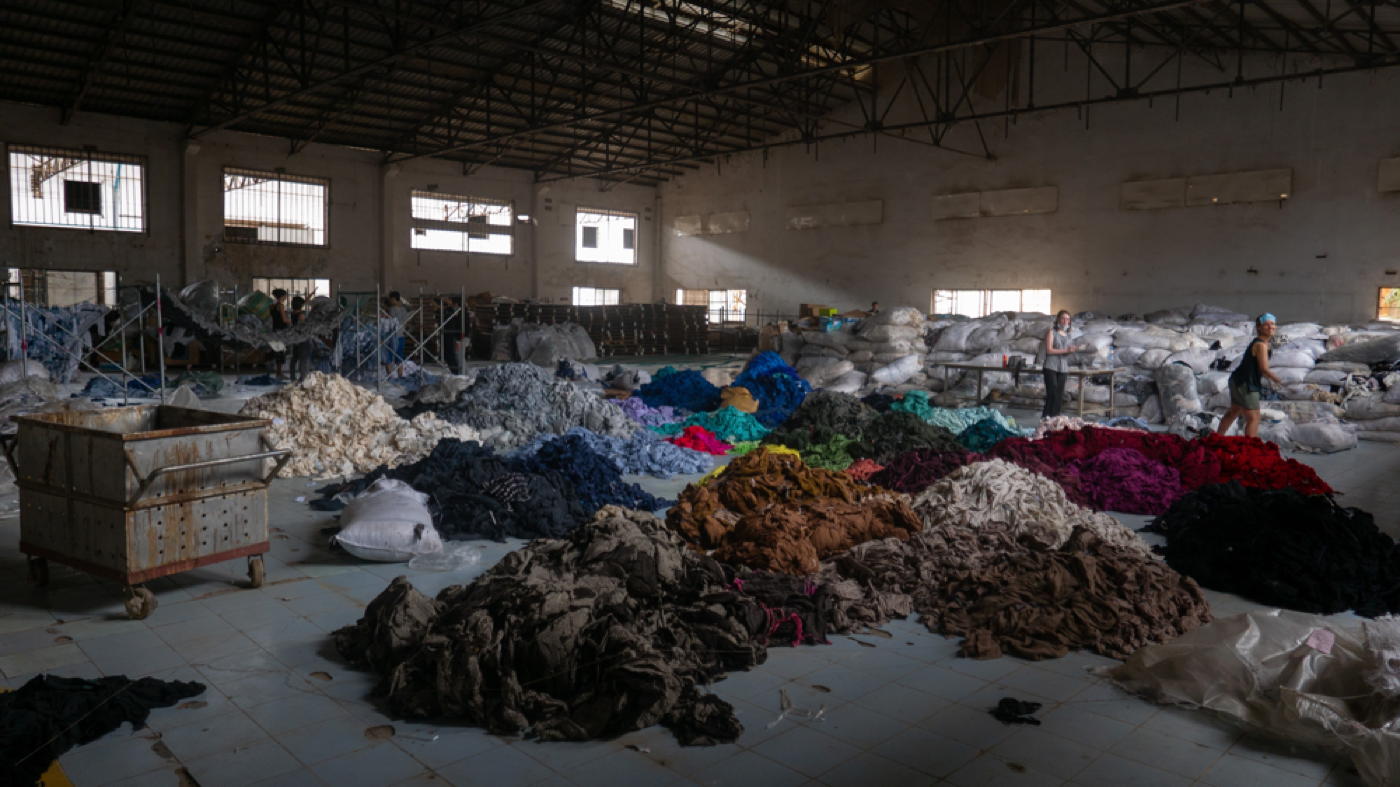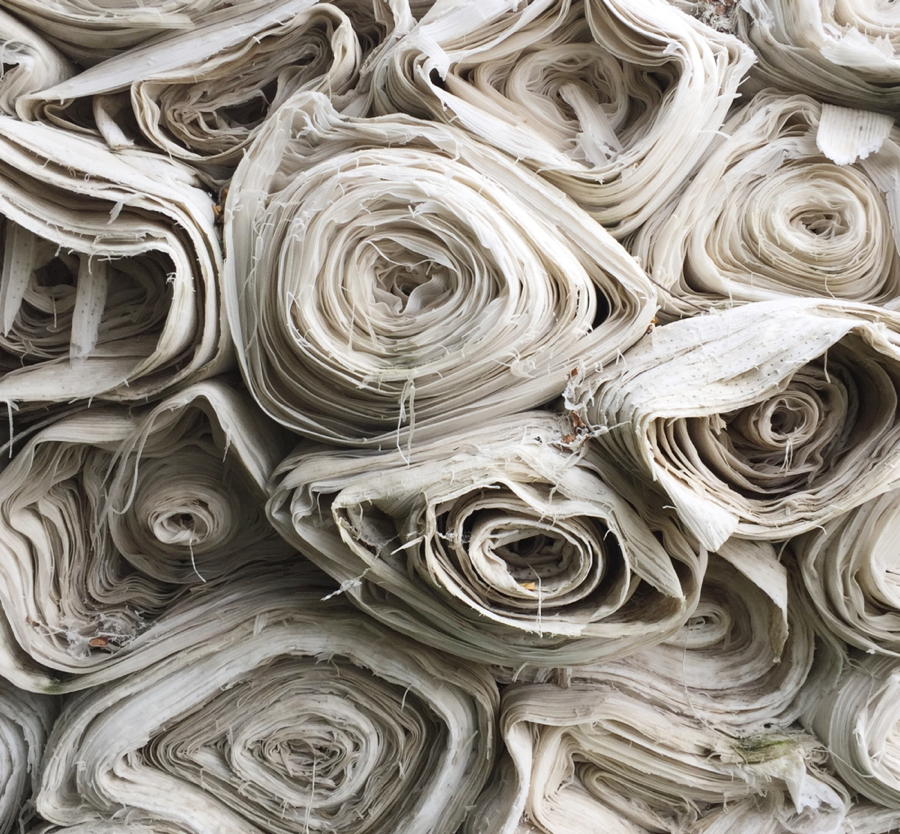Circular Textiles | Making Fashion Sustainable
The textiles industry is one of the largest in the world, employing 1.7 million people in Europe alone. It is also one of the worst industries for the environment. Its use of primary raw materials, water, land, and emission of greenhouse gasses is highly destructive. Making the textiles industry a circular one will help to escape this colossal amount of waste and overproduction. Circularity can make fashion sustainable.
To receive the Luxiders Newsletter, sign up here.
Circularity is all about reducing use of raw primary materials. Instead, the focus is on renewing and refurbishing the resources we already have. Fast fashion has had a massive impact on the speed at which the average citizen consumes clothing. Eurocities states that an average EU citizen consumes almost 26 kg of textiles a year, and disposes of about 11 kg. This is an increase of 40% since 1996. Though there is a lot to be changed within the textiles industry in order to attain circularity, there are things consumers can do to help.

WHY IS THERE A NEED FOR CIRCULAR TEXTILES?
Fast fashion has created an industry with a rapid turnaround of new trends. This encourages consumers to buy more, buy cheaper, and buy regularly. More than a hundred billion pieces of clothing are made each year, and in the last 15 years alone, the amount of clothing produced has almost doubled. But what exactly is the problem with such consumption? And what are the effects?
One of the main problems is the amount of waste the textiles industry currently creates. In 2017 The Ellen MacArthur Foundation estimated that less than 1% of textile waste was actually recycled. 1 truckload of clothing is being burned or landfilled every second. To put this into perspective, by the time you have finished reading this article, about 180 truckloads will have been burned or landfilled. Some of these discarded garments haven’t been worn more than 7 times.
Waste isn’t the only problem with our linear system – the resources currently used to make textiles are being stretched to a catastrophic point. 2,700 litres of water are needed to produce one single cotton t-shirt. Eurocities points out that this would take the average person nearly three years to drink. Not only this, but the fibres we favour can use a lot of energy to produce. Polyester requires over 70 million barrels of oil each year in the carbon-intensive processes it is produced from. It is also the most commonly used fibre. Global production of textile fibres has nearly tripled since 1975, with 60% of those fibres being synthetic. Since plastic is used in synthetic fibres, washing these garments can also be harmful, adding plastic to the water cycle.
HOW CAN WE HELP?
Simply ensuring the items you already own get well-worn is a solution. Circularity encourages sharing, swapping, renting, borrowing, and mending garments. You could even try turning your own garments into something new if you have the tools. These are simple ways to try out new trends and styles without the high environmental cost.
When you are finished with your garment, there are several options. To keep the item in circulation, you could sell it, lend it to a friend, or upcycle it. Some sustainable companies offer services in which you return the garment to them at the end of its life so they can re-use the textiles.
The best thing to do if you are buying new is to shop sustainably. Shop with an ethical company that uses sustainable and natural fabrics - for example organic cotton, which uses 88% less water to farm than conventional cotton. Other sustainable natural fabrics include cork, organic linen, recycled cotton, and organic hemp. Invest in durable items that you love. This way, garments stay in your wardrobe longer and aren’t thrown away.
WHAT IS THE GOAL?
The goal of the circular textiles economy is to eradicate waste, and to cease use of virgin resources. Though there are billions of pounds worth of economic opportunity in the circular system, new business models are required to unlock such potential.
World Circular Textiles Day is an example of what the future of circular textiles could look like. Their goal is that by 2050, we will have achieved 100% circularity in the textiles industry. By this time, products and raw materials will be kept in continual circulation, removing the need for virgin resources. This day was launched to celebrate the positive changes happening that bring us closer to a circular textiles future. It is celebrated on 8th October.
The Circular Textiles Programme (CTP) was the first sector programme within the Circle Economy. They strive for a zero waste future for the textiles industry. With growing support from various foundations, charities, and strategic partners, the CTP has already completed many projects devoted to recycling, infrastructure, and technology in the textiles industry. The goal is an entirely circular textiles economy that produces no waste.
SO, WHAT NOW?
Although the textiles industry and the waste it produces may appear hopeless, a circular textiles economy offers a much needed solution. By contributing to the effort and shopping consciously and minimally, we as consumers can help to slow down the pile of waste building up.

+ Words:
Emma Dahl
Luxiders Magazine




